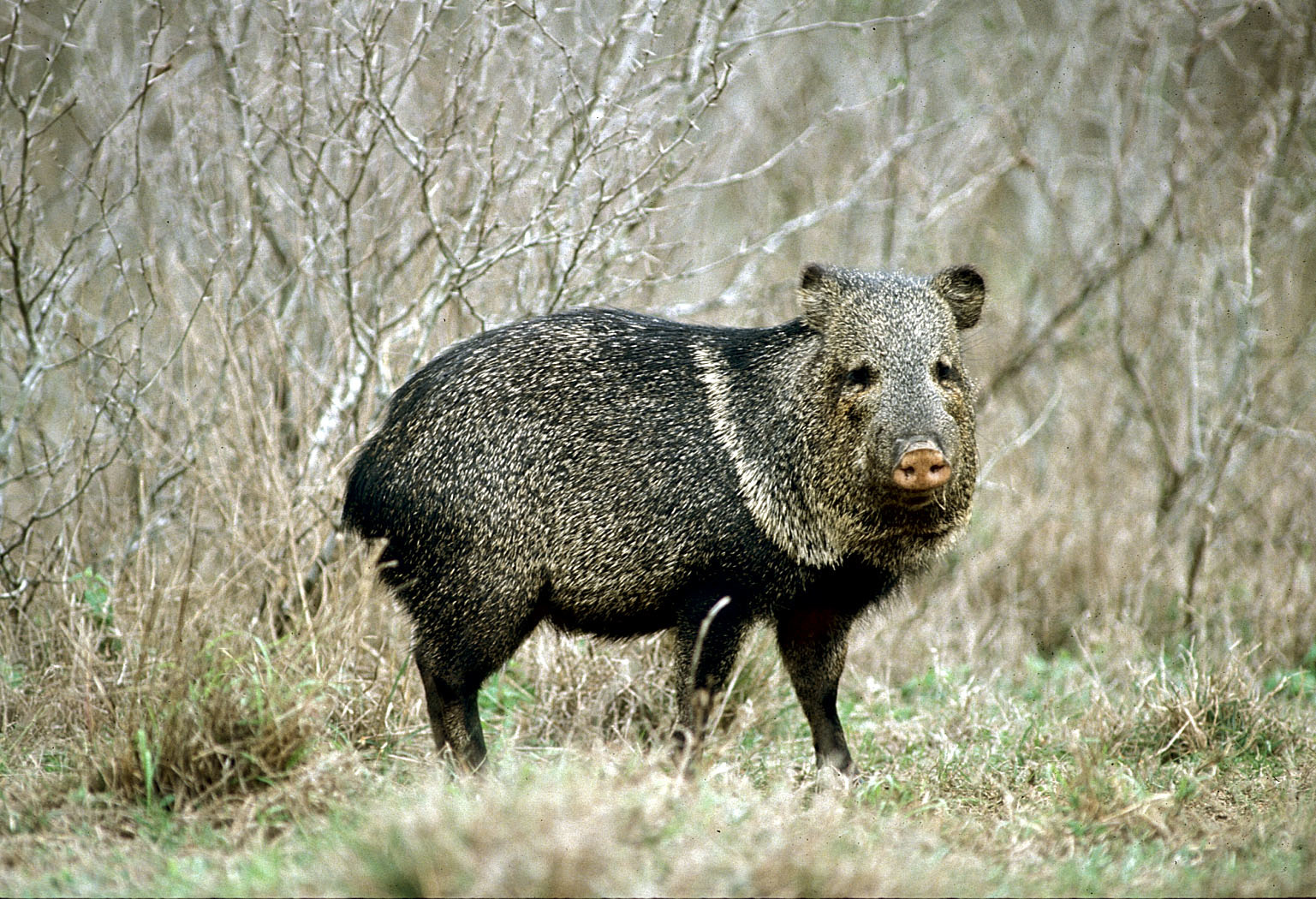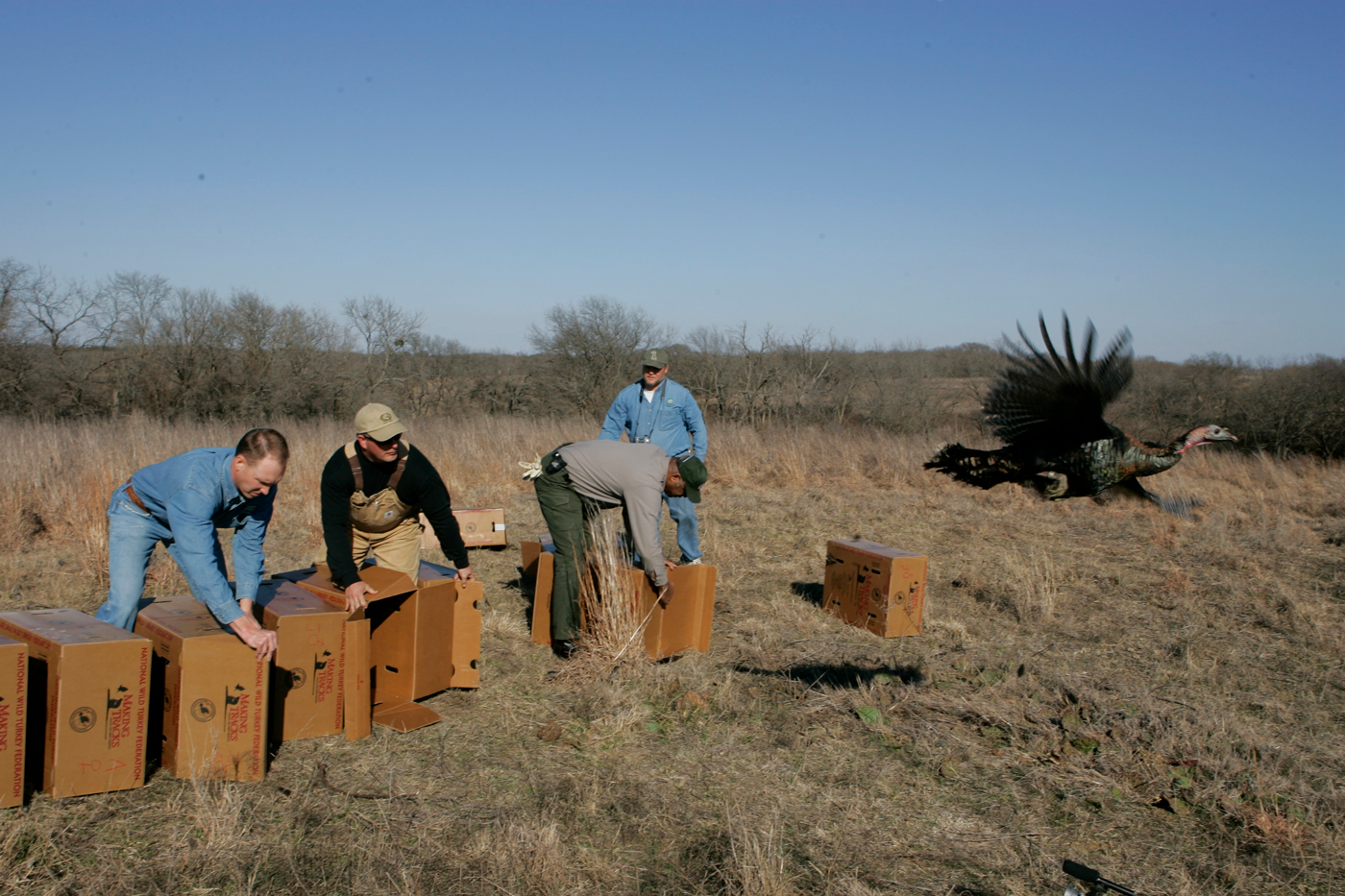
Texas Wildlife Research Program
Pittman-Robertson Grant Highlights
Each year, the TPWD Wildlife Research Grants program awards between $1 and $2 million in federal Pittman-Robertson Act funds for research on Texas’ native wild birds and mammals. This process starts with an annual review by Wildlife Division staff to identify our current, greatest research needs for managing these species. Based on that review process, we then post requests for proposals online for those research needs, and the Wildlife Division follows a competitive review process to award project proposals submitted by qualified Universities or non-governmental organizations. Below are the highlights of projects awarded over the last 7 annual funding cycles of the program (from fiscal year 2019 onward).
Fiscal Year 2024
Population and Spatial Ecology of Collared Peccary in the South Texas Plains
Principal Investigators: Stephen L. Webb — Texas A&M University
Paul M. Lukacs — University of Montana
Jacob L. Dykes — Texas A&M University
Walter E. Cook — Texas A&M University
Marcus E. Blum — Texas A&M University
TPWD Project Coordinator: Whitney Gann
Status: In Progress

Collared peccary (Pecari tajacu), also known as javelina.
Project Summary: Collared peccary (Pecari tajacu), also known as javelina, occur throughout southern and western Texas and in the Rolling Plains, and are classified as a game animal by Texas Parks and Wildlife Department (TPWD). However, collared peccary receive less management attention than other game species, and in many instances, data, information, and methods are limited. Current data show declining trends in population numbers, and it is proposed that many factors could be causing these declines such as frequent and widespread drought, increases in wild pig (Sus scrofa) populations, overharvest, improper rangeland management, or the reduction of woody vegetation. Understanding a species’ life history, ecology, and behavior are critical to managing their populations and habitat, and for mitigating issues related to population decline. Our proposed work has four focal points aimed at improving knowledge of collared peccary for management purposes and increasing public interest; both of which can incentivize future conservation efforts. First, we will develop and evaluate camera, roadside, and helicopter survey methods to estimate collared peccary abundance in the western South Texas Plains. These survey methods will rely on GPS tagged individuals to develop, evaluate, and validate each model using distance sampling, mark-resight, occupancy, and space-to-event methods. Second, we will use population abundance estimates from surveys along with harvest numbers, survival, reproduction, health, and habitat availability to model collared peccary population dynamics and growth. These data will also be used to investigate the effects of environmental characteristics and changing landscapes on population demographics. We will develop a web-based data management and analysis system to assist biologists with surveys, storing data, and fitting population models for collared peccary. Third, we will develop a suite of species distribution models for collared peccaries using helicopter survey detections, camera detections and occupancy analyses, and GPS tags and resource selection models. Last, we will develop educational media to elicit public interest in collared peccary management. These efforts will identify factors related to the distribution, survival, reproduction, and abundance of collared peccary, create user friendly tools (e.g., maps and web-based population models), and allow biologists, landowners and TPWD to prioritize management in a spatially explicit context.
Evaluation of Super-stocking on Genetics and Recruitment of Wild Turkeys in Texas
Principal Investigators: Andrew J. Gregory — University of North Texas
Blake Grisham — Texas Tech University
Stephen L. Webb — Texas A&M University
Warren Conway — Texas Tech University
TPWD Project Coordinator: Kyle Hand
Status: In Progress

Turkey released into release site habitat.
Project Summary: Using contemporary population genetic approaches, we will assess the relative contribution of various Eastern Wild Turkey (Meleagris gallopavo silvestris) super-stocking sources on the current Wild Turkey population in eastern Texas. In addition, based on release histories, we will test for hybridization between Rio Grande Wild Turkey (Meleagris gallopavo intermedia) and Eastern Wild Turkey, including for hybrid vigor among the existing Wild Turkey population across the Post Oak ecoregion. The goal of our project is to determine if any super-stocking source contributed more to the success of Eastern Wild Turkey populations than others in the Post Oak ecoregion. If so, a best practice in future translocation efforts would be to source individuals from those regions showing the greatest success in Texas. Additionally, we will use contemporary landscape genetic analyses to understand gene flow among Eastern Wild Turkey in Texas. After determining gene flow, we will estimate levels of functional dispersal among Wild Turkey sample locations to gain insights into how current land management for turkeys is influencing dispersal and survival of the species in eastern Texas. Collectively, these data will provide needed insights into Wild Turkey landscape dynamics across east Texas. These methods will allow us to evaluate relationships between landscape and super-stock source genetic diversity and how they interact to affect local population success. This information will allow Texas Parks and Wildlife Department to better plan land management, identify release site habitat, and select successful source populations for sustaining and improving Wild Turkey populations across the region.